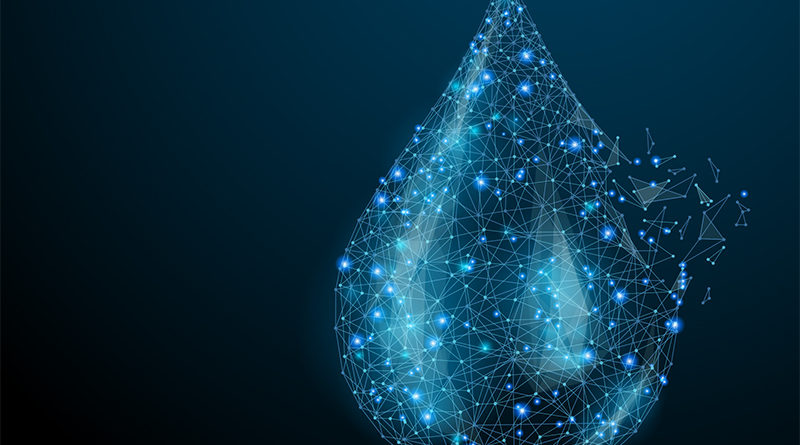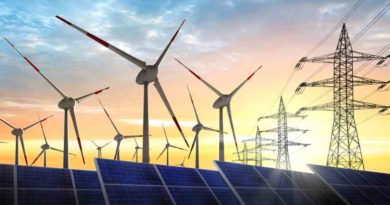
AI in the Water Industry: Framing the opportunity to foster acceptance
One of the most compelling stories about Artificial Intelligence (AI) to watch in the years ahead will take place in one of the most seemingly unlikely industries: water management, known in the past for its conservative approach to technology.
AI is still in its infancy in the water sector, but early applications of its methodologies are showing great promise.
While challenges need to be resolved in order to fully realize its possibilities, innovation experts believe that AI has the potential to fundamentally transform the economics and productivity of the water industry at a time when demand for water is unprecedented and rapidly accelerating.
According to the UNESCO, nearly two billion people are expected to be living in countries or regions with absolute water scarcity by 2025.
AI, which can be defined in many ways, is essentially the advanced analysis of data by a computer at a speed and scale far greater than humans alone could accomplish.
AI identifies patterns in data , continuously refining relationships between variables as it “learns” new information.
For the water sector, the power unlocked by AI-enabled problem solving is critical. Water systems globally are facing escalating challenges from overpopulation, to severe weather patterns from climate change, to aging infrastructure.
Water system managers face a constant battle to mitigate these issues and uphold rigorous standards to protect public health and the environment, while struggling to fund crucial repairs.
While use of AI in the water sector is still in its very early days, water managers are deploying AI methodologies on several fronts:
› AI was combined with a wireless sensor network at one large utility to eliminate more than a billion gallons of combined sewer overflows per year.
› Machine learning and artificial intelligence methodologies have been used by one water operator to identify under performing meters, identifying $750,000 in hidden revenue.
› Smart wastewater pumping systems are incorporating AI to sense operating conditions and adapt performance, helping eliminate expensive maintenance callouts.
In the future, AI has the potential to be deployed much more broadly across the water sector to provide predictive and prescriptive analytics that will help significantly drive down costs, improve customer service and lessen environmental impact.
However, while the promise of AI is incredibly powerful, barriers to adoption do remain. One of the most crucial hurdles is whether AI advocates can frame the opportunity appropriately to earn wider industry acceptance.
One way to address this issue is to examine AI within a broader, historical context. While it’s often spoken about as revolutionary,
AI can also be positioned as the next evolution of tools that can help the water industry resolve three major challenges:
First, resource deficiencyWater stakeholders, including operators, are frustrated there are never enough resources to do what needs to be done to protect the environment and public health.
Second, quality of life for utility professionals Utility workers are thwarted by the absence of information, visibility and tools they need to make better decisions.
Third, volatility of outcomes Persistent variability in operations causes problems like overflows or drinking water quality violations, resulting in financial penalties and potential public health issues.
In all three cases, AI can drive progress: The potential economic benefits of AI will scale dramatically as the water sector gathers more data about its operations.
AI offers new ways to empower utility professionals, giving them a higher level of efficacy and agency over the infrastructure they manage. In turn, AI relies upon and is fueled by human experience and insight.
In terms of outcomes, as utilities begin to incorporate AI methodologies, they will develop a vastly greater understanding of the unique water challenges in their local environments, from seasonal weather shifts to customer behaviors, enabling operators to manage more effectively.
Like the emergence of variable frequency drives three decades ago and the rise of online sensor instrumentation, AI is the latest innovation with the potential to propel the water sector forward.
The best way to help the industry become open to this opportunity is to focus on the core value drivers that unite water stakeholders: How do we do more with less?
How do we make the life of the operator better? And how do we ensure that water systems continue to deliver substantial public health and environment benefits?
AI can be a blockbuster story for the water sector, if stakeholders can succeed in merging its technological capabilities with human intelligence and expertise, and a rigorous code of ethics.
But, as with any transition, overcoming fear of change is critical.
For the constantly challenged water sector, leaders should focus on the fact that AI is simply a new generation of technologies with broad-based application for improving productivity and safety.
It’s not about firepower or fireworks, it’s about answering the major issues facing water managers globally and helping them advance their all-important charge to serve their communities and be responsible stewards of their local environments.




